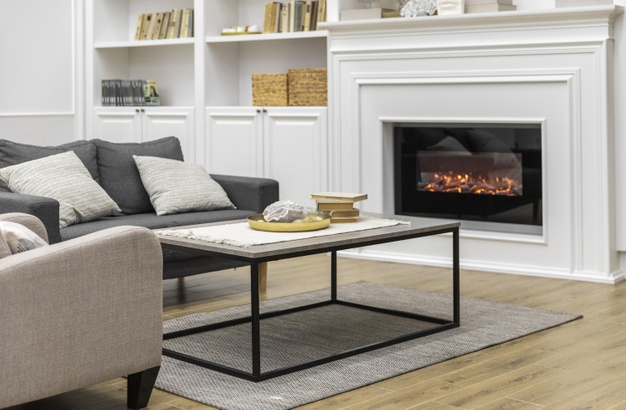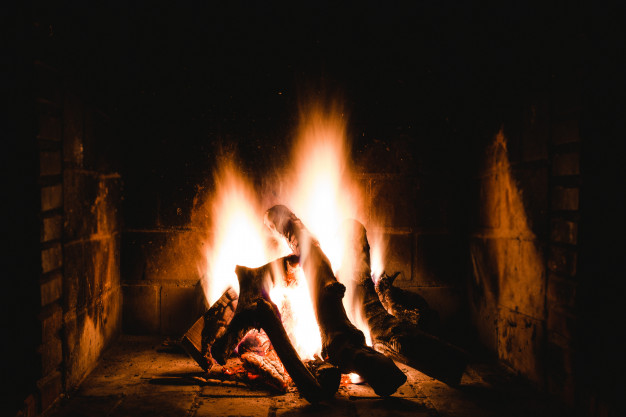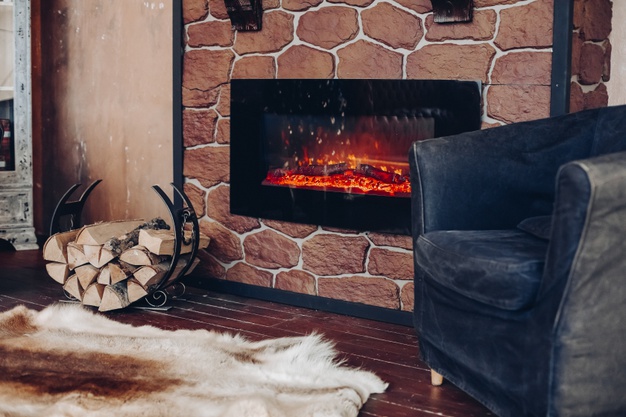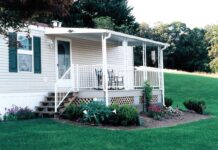
Many homeowners love a wood-burning fireplace, which is why fireplace decorating ideas are so popular.
But did you know as popular as these cozy fireplaces such as those at this website are, many people don’t use them correctly. To get the most out of your fireplace and keep everything safe, we offer the following do’s, and dont’s of woodburning.
Wood Burning Do’s

- Burn only hardwoods that have been properly seasoned. Softwoods burn cooler and smoke more, which produces dangerous creosote in your chimney. Creosote leads to chimney fires.
- Keep your dampers 100% open. Some homeowners think that if they partially open the damper, this reduces heat loss through the chimney. But all this does is let carbon monoxide leak into the home, which can be deadly.
- Have your fireplace and chimney inspected and cleaned annually. The Chimney Safety Institute of America recommends the chimney must be cleaned after you burn a cord of wood. Also, you should have your chimney checked at least every 60 months or five years.
- Bring your firewood in from the cold for a few hours before you burn it. Cold firewood is harder to start, and it lowers the efficiency of the fire at first.
- Get your fire going as soon as you can. A fire that takes a long time to start may go out. So light the fire at several points to ensure you get it going the first time. Having long matches is convenient for lighting several locations in your kindling.
- Dry your wood right if you’re seasoning it yourself. It can take several months for cut hardwood to dry, so give it enough time.
- Have the right tools, grate, and spark guard on hand. Having these essential tools available makes the burning process more straightforward. The tools you’ve got to have are a shovel, poker, and ash broom. Grates are the part where you put the wood, and the higher off the bricks, the better. A taller grate allows better airflow and more coals, which gives off much of the heat.
- Use an appropriate fire starter. It’s best to have a gas log lighter, but any firewood starter or kindling is fine.
- Have a chimney cap on your chimney. A chimney cap keeps sparks from flying out of the chimney. Plus, the cap prevents critters from getting into your chimney.
- Clean the fireplace glass often if you have an insert. You won’t need to replace the glass if you clean it regularly.
- Keep a functioning smoke alarm in every room, and make sure the batteries are good.
Wood Burning Don’ts

- Your fireplace isn’t for burning trash. Plastics, Styrofoam, and anything other than treated firewood has many chemicals that are sucked into the chimney and the home. These chemicals may be caustic and damage your flue and chimney. Remember that any wood-burning fireplace leaks into the house at some point, so you don’t want to burn anything with hazardous fumes. Also, burning paper is a bad thing because it can go up the chimney and float around outside – still lit.
- Closing the damper too soon can release smoke and fumes into your home, so wait to close it until the next day.
- Using lighter fluid or gas in your fireplace is hazardous and should never be used.
- Putting a fire out with water isn’t appropriate. Use a fire extinguisher if you cannot wait for it to go out on its own.
- If you leave the fire and no one is around, close the glassdoors. Otherwise, never leave the fire alone.
- Don’t have the logs packed too close. Fire requires oxygen to burn well, so your fire may not produce enough heat. But burning the logs too far apart also can cause an inefficient burn. The ideal formation for the wood is propping them against each other so flames and heat can transfer for perfect burning.
- Closing the fireplace doors when the fire is roaring is hazardous. It’s OK to shut them when the fire dies down, though.
Tips For Great Woodburning

If you want the best results with your wood-burning fireplace, keep these tips at the top of mind:
- When you use a gas log lighter to start your fire, use it to preheat your flue. Burn it for five minutes before you put in the wood so smoke won’t come back into the home.
- It’s not wise to use wood that is often used for food smoking. This smells fantastic when you’re at the restaurant, but it will eventually make your house smell like a smoked chicken wing!
- Open any external air vents in the room, so your fire gets more air. More air means a more efficient and hotter fire.
- Add at least two logs when it burns, as this will help it burn better.
- Keep the fire as hot and efficient as you can. It makes more heat and reduces creosote and smoke. It’s also much more efficient, and you’ll burn less wood.
- Shut off your furnace for ideal efficiency. Your fireplace sucks a lot of air up the chimney. The furnace will run non-stop because your fire is sucking outside air into your house.
- You can use lint from your dryer as a great fire starter. Wad a bit of it up and insert it in the kindling.
- If the fireplace has smoke coming out, crack a window nearby. This boosts air pressure and helps move the smoke through the chimney.
- Getting the chimney swept once per year will reduce problems. You’ll notice less smoke odor, and it prevents your chimney from going up in flames.
- Keep your coal bed as close to the front as you can. Most of the fire’s heat comes from the coals. With the coals raked closer to the room, more heat is released into the home.
Now you should know almost everything you need to burn a hot, efficient, and safe fire. By following our tips, you’re sure to enjoy the cozy ambiance of wood fires for years with your family.







